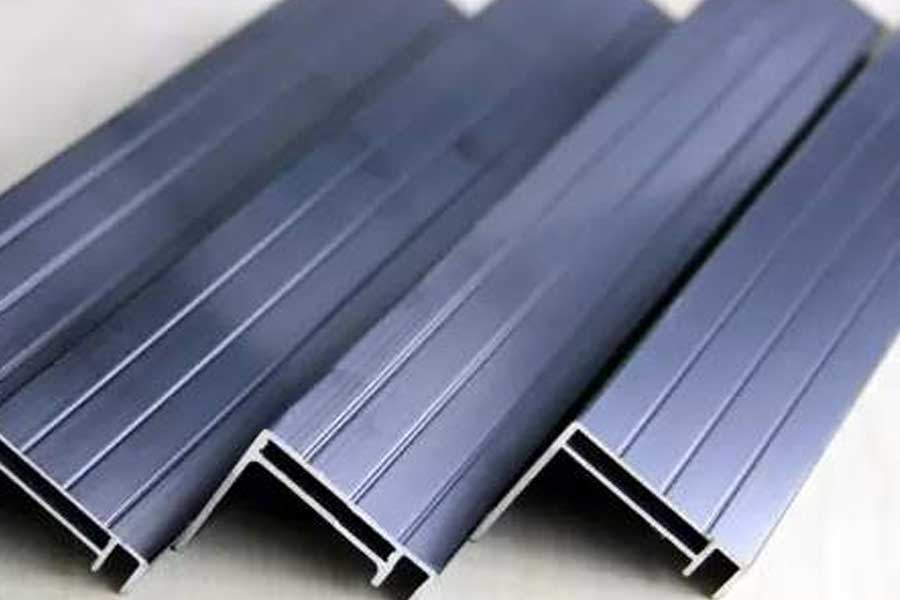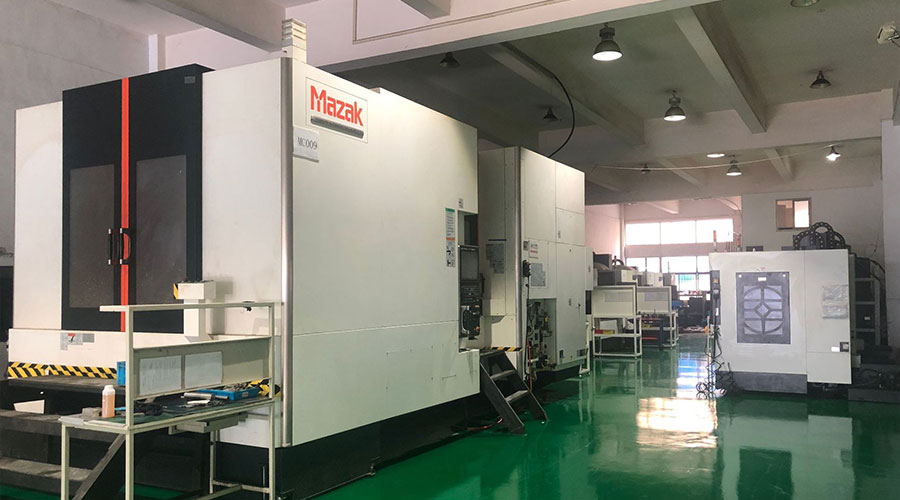Electrophoresis has been increasingly widely used in various fields such as analytical chemistry, biochemistry, clinical chemistry, toxicology, pharmacology, immunology, microbiology, and food chemistry. The matte electrophoretic coating of aluminum alloy is applied on the surface of the anodic oxide film. Similar to bright electrophoresis, its production process is as follows:
Degreasing → water washing → alkaline corrosion → water washing → water washing → neutralization → water washing → anodizing → water washing → pure water washing → electrolytic coloring → pure water washing → hot pure water washing → pure water washing → electrophoresis → RO1 water washing → RO2 water washing → drip drying → pretreatment Dry → cure.

Extinction electrophoresis and transparent electrophoresis are basically the same. Both use aluminum profiles as anodes. Under the action of direct current, an electrochemical reaction occurs. The charged paint particles move to the object to be coated under the action of direct current, so that the electrophoretic paint is deposited and deposited on the profiles. A paint film is formed on the surface, and the whole reaction includes four simultaneous processes of electrophoresis, electrolysis, electrodeposition and electroosmosis. The differences mainly include electrophoretic paint raw materials and production process parameters. The molecular weight of matte electrophoretic paint is much larger than that of bright electrophoretic paint, generally between 70,000 and 80,000 g/mol. In addition, in terms of process control, its electrophoresis voltage and tank There are differences in liquid temperature and electrophoresis time. Normally, for the same color number, the voltage, time and temperature of extinction electrophoresis are higher than those of transparent electrophoresis. In addition, compared with bright electrophoresis, there is one more pre-drying process, which reduces The water mark produced when dripping dry in cold and humid weather is closely related to the characteristics of electrophoretic paint.
Factors Influencing the Quality of Vertical Oxidation Extinction Electrophoresis Painting and Control Methods
Ordinary electrophoresis painting cannot cover up the surface defects of the profile, and the matting electrophoresis can only cover a small part of the surface defects of the substrate, and due to the long oxidation production process and the strong continuity of the pipeline operation, especially the use of oxidation vertical hanging automatic production, Often the same type of defects exist in the products produced in a period of time. The defects generated in each process stage will be basically exposed after curing. This also causes the yield of electrophoretic profiles to be lower than that of ordinary oxidized profiles, and the matting Electrophoresis is a high-end product, and the subtle defects after surface treatment are more easily revealed. The reasons and countermeasures of common defects in production are as follows:
(1) Water mark
The more consistent statement on this type of defect is caused by the uneven water film on the surface of the profile before entering the electrophoresis tank. Especially in cold weather, the probability of occurrence is higher. We adopt to reduce hot pure water washing, extend the drip-drying time, or avoid the cold and humid weather and concentrate production. For a small amount of water marks in production on hot days, one is to fully cool the profile after washing with hot water. Then enter the pure water tank before electrophoresis; the second is to replace a certain amount of pure water in time to ensure that the temperature of the pure water tank is consistent with the room temperature; the third is to quickly transfer the profile from the pure water tank to the electrophoresis tank, and the operator’s coordination can avoid such defects. of. In addition, ensure the stability of the electrophoresis bath.
(2) Dirt on the surface of the paint film
Different reasons lead to different places where the dirt gathers. If the dirt on the upper part of a row of profiles is obvious, it is generally caused by more impurity particles in the washing tank. This is because the oxide film is positively charged, while the particles in the water are negatively charged and cannot be easily removed once adsorbed. For example, the dirt on the outside of a hanging profile is generally caused by exposure of the electrophoresis profile to unclean air. When it reaches the drip-drying stage after electrophoresis, because the paint film has a certain viscosity, when there is more dust in the air, it is easy to adhere to the paint film. Of course, this type of defect can also occur when using an uncleaned curing oven or the filter screen of the curing oven is damaged. Therefore, the curing furnace needs to be cleaned regularly. After cleaning, spraying a suitable solution into the furnace can reduce the generation of furnace ash.
(3) Orange peel
The reason is that the electrodeposition is not uniform, so it is necessary to analyze the factors that accelerate the electrodeposition speed, such as bath temperature, conductivity, painting voltage, pH value, etc. These factors accelerate the migration of charged particles. Once it fluctuates to a critical value, it will increase the probability of defects. Especially when the bath temperature is greater than 25°C or the bath is contaminated by acid, the probability of such defects is higher. Therefore, the process The parameters should be kept as stable as possible. In addition, if the cleaning is not clean after oxidation, the acid in the membrane holes will flow into the electrophoresis tank, which will also cause orange peel. Therefore, the electrophoresis tank must be carefully maintained and painted in time to ensure the quality of the tank.
(4) The influence of conductive beam storage acid on the quality of paint film
The anode conductive beam used as the electrophoresis material must be cleaned (sprayed with water), and then enter the electrophoresis process after wiping dry the water, otherwise the following problems will occur: ①The water droplets containing acid and alkali drip on the good paint film, resulting in partial paint film Discoloration; ②The cleaning is not thorough. After the conductive beam comes into contact with chemical substances, the corroded surface will produce powder falling after baking, which will cause particles to contaminate the paint film. ③The acid droplets on the electrophoresis tank will produce “dead paint”, and the “dead paint” will form local clots when attached to the surface of the profile, which often causes the profile to be reworked or scrapped in the diffusion area of the “dead paint”. In addition, the profiles in the falling tank must be salvaged in time. Electrophoretic profiles cannot be cross-produced. Otherwise, the paint film on the surface will fall off due to the falling material soaking in the tank, and “dead paint” will also be produced. .
(5) The paint film is scratched and scratched during the unloading and packaging process
When the profile is hung, it accumulates, causing the paint film to rub against each other and cause scratches; or the ends are not aligned and scratched when placed. Any irregular actions in this process are harmful to the decorative effect of the paint film. Therefore, the operation should be standardized during the unloading and packaging process, and they should be placed separately in an orderly manner.
Link to this article: Process Control of Aluminum Alloy Extinction Electrophoresis
Reprint Statement: If there are no special instructions, all articles on this site are original. Please indicate the source for reprinting:https://www.cncmachiningptj.com/,thanks!
 Sheet metal, beryllium, carbon steel, magnesium, 3D Printing, precision CNC machining services for heavy equipment, construction, agriculture and hydraulic industries. Suitable for plastics and rare alloys machining. It can turn parts up to 15.7 inches in diameter. Processes include swiss machining,broaching, turning, milling, boring and threading. It also provides metal polishing, painting, surface grinding and shaft straightening services. The production range(include aluminum die casting and zinc die casting) is up to 50,000 pieces. Suitable for screw, coupling, bearing, pump, gearbox housing, drum dryer and rotary feed valve applications.PTJ will strategize with you to provide the most cost-effective services to help you reach your target,Welcome to Contact us ( [email protected] ) directly for your new project.
Sheet metal, beryllium, carbon steel, magnesium, 3D Printing, precision CNC machining services for heavy equipment, construction, agriculture and hydraulic industries. Suitable for plastics and rare alloys machining. It can turn parts up to 15.7 inches in diameter. Processes include swiss machining,broaching, turning, milling, boring and threading. It also provides metal polishing, painting, surface grinding and shaft straightening services. The production range(include aluminum die casting and zinc die casting) is up to 50,000 pieces. Suitable for screw, coupling, bearing, pump, gearbox housing, drum dryer and rotary feed valve applications.PTJ will strategize with you to provide the most cost-effective services to help you reach your target,Welcome to Contact us ( [email protected] ) directly for your new project.
Link to this article:Process Control of Aluminum Alloy Extinction Electrophoresis
Reprint Statement: If there are no special instructions, all articles on this site are original. Please indicate the source for reprinting.:ODM Wiki,thanks!^^